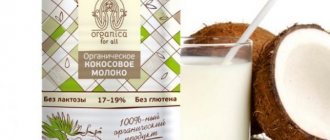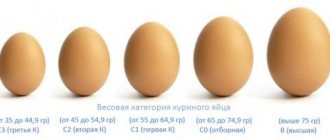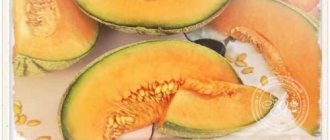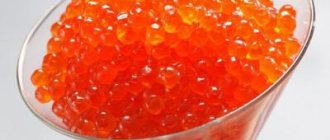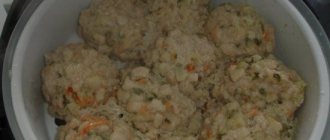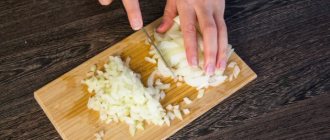For many, autumn is associated with a basket of chestnuts - sweet and nutritious. The unique taste of these fruits is valued all over the world, especially in the homeland of chestnut trees - Japan and China. But it’s worth warning right away: we are not talking about the fruits that are abundant underfoot in city parks and courtyards. The fruits of not all chestnuts are edible. Some varieties are completely poisonous. Therefore, do not rush to collect and fry fruits from the parks.
How to recognize edible chestnuts?
Content:
- How to recognize edible chestnuts?
- Chemical composition of fruits
- Health Benefits
- Treatment with chestnuts
- Possible side effects
- How to choose and store correctly
- What to cook
- Horse chestnut and edible: is there a difference?
True (edible) chestnuts are large, deciduous, heat-loving trees from the beech family. In spring they delight with greenery, and in autumn with nuts. Yes, these glossy brown fruits, hidden behind a prickly green skin, are nuts. And compared to other fruits from this group, these are quite large nuts with delicate white pulp (several nuts are usually hidden under the protective shell). Depending on the type, they can weigh from 8 to 12 g.
The first and most obvious confirmation of the edibility of the fruit is the appearance of the protective green shell. If it is covered with numerous thin light green spines, you have edible fruits. The peel with a relatively small number of thick spines is an ornamental plant.
There are several varieties of edible chestnuts. The most famous:
- Japanese (produces large, sweet fruits in October);
- Chinese;
- sweet (also known as Spanish or Portuguese, native to the European continent);
- American stunted (aka dwarf);
- American regular.
Chemical composition of fruits
Chestnuts are a rich source of a variety of vitamins and minerals. Nuts contain the most B vitamins, ascorbic acid, copper, iron, manganese, phosphorus and potassium. The latter, for example, is important for healthy heart function, iron prevents anemia, and magnesium and phosphorus are important components of bone metabolism.
By the way, the presence of vitamin C makes chestnuts special. The fact is that nuts, as a rule, do not contain this vitamin, and chestnuts contain almost 72% of the recommended daily intake of ascorbic acid. This powerful antioxidant vitamin is necessary for the formation of collagen, a protein responsible for the beauty and youth of the body. It also stimulates the immune system, enhancing its response to infections and free radicals. In addition, chestnuts boast a generous amount of B vitamins and are low in fat. The body can also get almost half of the daily servings of copper and manganese from a 100-gram serving of cooked chestnuts.
Unlike extremely high-calorie walnuts or almonds, chestnuts contain only 200 kcal per 100 grams. At the same time, they are rich in starch, similar to that found in potatoes or corn. And this is also surprising, since starch is a substance unusual for nuts and seeds. The fruits are also rich in carbohydrates, but this should not be scary, since the carbohydrates in these nuts are correct, that is, complex (they do not cause glucose surges and will not increase weight if consumed in moderation).
Another amazing characteristic of chestnuts is their significant content of folic acid, which is necessary for the creation of red blood cells and DNA synthesis. Well, like typical nuts, the fruits are rich in monounsaturated fatty acids, which regulate the balance of “bad” and “good” cholesterol, prevent coronary artery disease and strokes.
But what chestnuts certainly do not contain is gluten, which cannot but please people with celiac disease.
People with wheat allergies can replace regular flour with chestnut flour. Nutritional value per 100 g
| Calorie content | 213 kcal |
| Squirrels | 2.42 g |
| Fats | 2.26 g |
| Carbohydrates | 45.54 g |
| Cellulose | 8.1 g |
| Vitamin A | 28 IU |
| Vitamin C | 43 mg |
| Vitamin B1 | 0.238 mg |
| Vitamin B2 | 0.168 mg |
| Vitamin B3 | 1.179 mg |
| Vitamin B5 | 0.509 mg |
| Vitamin B6 | 0.376 mg |
| Folic acid | 62 mcg |
| Sodium | 3 mg |
| Potassium | 518 mg |
| Calcium | 27 mg |
| Copper | 0.447 mg |
| Iron | 1.01 mg |
| Magnesium | 32 mg |
| Manganese | 0.952 mg |
| Phosphorus | 93 mg |
| Zinc | 0.52 mg |
Health Benefits
For teeth and bones
It is well known that a person needs calcium and phosphorus for strong teeth and bones. However, for both minerals to “work”, magnesium is necessary. The latter is responsible for the formation of hard enamel on teeth and protects bone tissue from degeneration and destruction. It is important that all three elements are present in chestnuts. True, calcium is presented in small quantities.
For blood vessels
Chestnuts, although they do not belong to fatty foods, chemically contain essential fatty acids, including linoleic, palmitic and oleic acids, which are responsible for the strength and elasticity of blood vessels. Another good news: these nuts not only contain a low concentration of cholesterol, but also cleanse the blood vessels of excess unhealthy fat that has already accumulated.
For the thyroid gland
The thyroid gland is the largest gland of the endocrine system. It produces two important hormones: triiodothyronine and thyroxine. It also regulates the rate at which the body uses energy, synthesizes proteins, and regulates the body's sensitivity to hormones. Ellagic acid, contained in chestnuts, regulates the functioning of the thyroid gland, and is particularly useful for overactive glands. The acid suppresses excessive thyroid secretion.
For digestion
Chestnuts contain a lot of fiber, which is essential for healthy circulation of digestive products in the system. However, with insufficient water consumption, fiber, on the contrary, causes constipation. But chestnuts are a unique product that combines dietary fiber and water in adequate proportions, making these nuts simply ideal for improving the digestion process.
For weight loss
Excess weight is not only an aesthetic problem. Different degrees of obesity cause disorders in the body. But losing weight should be gradual so as not to cause stress to the body. And chestnuts are the best fit for a proper weight loss program. They contain almost no fat, but provide satiety for a long time. In addition, they serve as an excellent source of essential minerals and vitamins for humans, and also prevent the accumulation of excess fluid in tissues.
For heart
Along with vitamin B12 and folic acid, vitamin B6 regulates levels of homocysteine, a non-protein amino acid that, in excess, causes inflammation and damage to blood vessels. This amino acid can cause clogged arteries. People with high levels of homocysteine are at increased risk of having a heart attack or stroke. Chestnut nuts are rich in components that prevent excessive homocysteine production.
Powerful antioxidant
The large amount of vitamin C, gallic acid and ellagic acid make chestnuts a strong and effective antioxidant. Antioxidant substances are important for the body to remove toxins and fight free radicals. Free radicals are formed in the body as a result of the reactive interaction of molecules with active oxygen. The uncontrolled growth of free radicals destroys the body's cells, causes damage to the DNA structure and ultimately causes malignant formations.
Chestnuts, with their powerful antioxidant properties, are responsible for detoxifying the body and optimizing the functioning of the immune system.
Preventing stone formation
Oxalates are ions that increase the risk of stone formation in the body. In particular, calcium oxalate is the culprit of kidney and gallstones. Oxalate levels in the body are directly related to the concentration of these substances in food. It is gratifying that chestnuts are a low-oxalate food. And magnesium, present in nuts, regulates the distribution of calcium in the body: it ensures maximum deposition of the mineral in the bones with minimal entry into the bloodstream, thereby preventing the formation of stones.
Benefits for pregnant women
Pregnancy is an important time for every woman, when she needs to take the best care of herself and her unborn child. The fetus, while developing, consumes a lot of nutrients, thereby depleting the mother's body. So proper nutrition and regular replenishment of nutrients are vital for both organisms. And chestnuts are a good choice for this. They supply minerals important for bone strength, preventing swelling and spasms, and also strengthen the immune system and protect against infections. And now another good news for expectant mothers: chestnuts relieve nausea in the first trimester of pregnancy.
Medicinal properties of chestnut for the body
Chestnut nuts not only enrich the body with useful elements, but also help get rid of many diseases. Fresh fruits are used for intestinal disorders and malaria, a decoction of chestnut leaves and nuts is used to treat colds and viral respiratory diseases, and an ointment based on crushed chestnut kernels is used for radiculitis.
Important! Drinks made from chestnut and leaves have a tonic effect, so they are recommended to be drunk during the recovery period after surgery. But in order for chestnut nuts to be beneficial and not harm the patient, it is necessary to consult a specialist before use.
Chestnuts have a beneficial effect on the female body:
- Prevents the development of cancerous tumors.
- Affect reproductive functions.
- Neutralizes pain during menstruation.
- They increase the elasticity of blood vessels and are a preventative against varicose veins.
It is recommended for men to use a decoction of chestnut fruits for the prevention and treatment of prostatitis, hemorrhoids and problems with potency.
Attention! Preparations based on horse chestnut are useful for men and women working in hazardous industries. They help cleanse the blood and remove toxins from the body.
The healing properties of chestnut fruits are used to prevent a number of diseases, including those that most often affect older people.
Chestnut nuts help with:
- Atherosclerosis.
- Thrombosis.
- Hypertension.
- Rheumatism.
- Gout.
- Cardiovascular pathologies.
Due to the large amount of fiber, the fruits of the chestnut tree are quite heavy food for the child’s body. Therefore, they are not recommended to be introduced into the diet of children under five years of age . After 5 years, the use of chestnuts is allowed, but their quantity must be strictly dosed, and the fruits must be ground to a puree-like state.
You may be interested in: Beneficial properties of almonds
Treatment with chestnuts
Severe diarrhea (such as dysentery) can cause severe dehydration, which is a big problem. In alternative medicine, chestnut is often mentioned as an astringent. Researchers, after several observations, agreed: the tree bark and its nuts help stop diarrhea. The water in which the fruits (along with the shell) or bark were boiled is rich in tannins, which have medicinal properties. Natural medicine is prepared from 3 tablespoons of crushed bark or nuts and 1 liter of water (cook for 20 minutes). The decoction is taken 2-3 glasses per day. But it is worth noting that this folk remedy is not suitable for children, since tannins have a bad effect on unformed organisms.
Researchers confirm that chestnuts contain substances that act as expectorants on the body. This ability of the chestnut is actively used by pharmacists and herbalists, creating cough syrups with an extract of this plant.
And in India, chestnuts are used to remove helminths from the body.
Application in medicine
Horse chestnut is used in pharmacology; medicines based on it are indicated in the treatment of venous circulation disorders and bruises. Preparations containing plant extract include Aescusan, Esculus, Venitan, Reparil.
Aescusan
In folk medicine, the anti-inflammatory, tonic, regenerating and astringent properties of noble chestnut and acorn are used more widely. The raw materials for preparing the medicine are all parts of the plant - leaves, bark, fruits, inflorescences and buds.
Decoctions, tinctures, and ointments are prepared from them, which help alleviate the condition of the following diseases:
- arthritis and osteochondrosis;
- varicose veins and thrombophlebitis;
- bronchitis;
- haemorrhoids;
- atherosclerosis;
- gynecological pathologies;
- disturbances in liver function;
- bleeding.
Chestnut honey is especially valued; the product is recommended to be consumed in a teaspoon for gastrointestinal diseases, endocrine disorders, vascular and heart pathologies, and anxiety conditions.
Sweet medicine helps with kidney disease, colds and low immunity.
How to choose and store correctly
On the Eurasian continent, chestnuts appear on markets in October and do not lose their popularity until March. But still, the peak of sales occurs in December. When buying raw nuts, it is better to give preference to large and fresh specimens. To check the freshness of the fruits, you will have to cut one of them and evaluate the fleshiness and color of the kernel under the skin. You should not take nuts with a greenish streak between the outer shell and the kernel. Good chestnuts should be fairly heavy (for their size).
When it comes to storage rules, the same recommendations for chestnuts as for fruits or vegetables are more likely to apply, rather than the canons used for nuts. That is, the fruits will have to be packaged in an airtight container and placed in the refrigerator, where they will remain fresh for several more weeks.
What to cook
In the old days, the indigenous people of the American continent consumed chestnuts as one of their staple foods (similar to potatoes today).
Nowadays, roasted chestnuts are one of the most popular in the world. To prevent the nut from “exploding” during frying, several small cuts are made on the peel. In Japan, a popular fall dish is rice with steamed chestnuts. In Korea, a dessert is prepared from chestnuts, fruit marmalade, pine nuts and sticky rice. Koreans serve this delicacy on the New Year's table. Americans also use chestnuts as a stuffing option for the traditional turkey on Thanksgiving Day. In Tuscany, chestnut flour is prepared from dried and crushed fruits. It, like wheat, is suitable for bread, pies, donuts or pancakes; it is used as a thickener in sauces, soups and other dishes. Glazed chestnuts and butter made from these nuts are popular in Western European countries. A coffee substitute is made from roasted and crushed fruits.
Harm of chestnuts and contraindications
One of the nuances of using chestnut fruits for food can be the wrong choice. Horse chestnut fruits are poisonous and unsuitable for consumption. In some cases, they are confused and attempts are made to prepare a delicious dish from horse chestnut.
Eating nuts may be harmful to people who have allergic reactions to food. Chestnut fruits are a specific product, so they can cause non-standard reactions in the body.
They are not recommended for people suffering from kidney failure. Taking may harm the genitourinary system.
Nuts are also contraindicated for people who suffer from diabetes. The carbohydrate content can be harmful and provoke an exacerbation of diabetic conditions.

